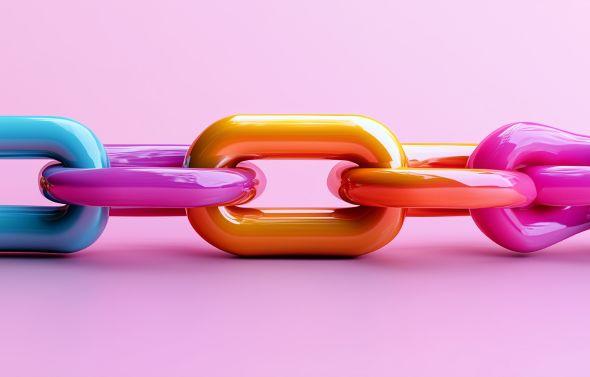The Best Zapier Tools to Use for your Airbnb Business

Did you know Zapier has over 3 million users globally, helping more than 100,000 paying customers automate workflows across thousands of apps?
Here’s the thing: running an Airbnb business means juggling a lot, guest communication, new bookings, cleaning schedules, check-in instructions, not to mention finance tracking. All those repetitive tasks add up. They eat into your time, slow down your response to guests and make scaling harder.
That’s where automation tools like Zapier come in. With Zapier you can connect apps you already use llike Airbnb, Gmail, Google Sheets, Slack, project management tools and make them talk to each other. You can set up workflows so that when something happens in one app (say, a new reservation), another app automatically reacts (send a check-in message, update a spreadsheet, alert your cleaning team). No more manual copy-paste, no more risking that you forget something important.
This article covers the best Zapier integrations for Airbnb hosts, how to set up Zaps that actually help and how using Zapier for Airbnb management can free up your time so you can focus on growth, not busywork.

What is Zapier (and Why it Matters for Airbnb Hosts)
Zapier is a no-code automation platform that lets different apps “talk” to each other. Think of it as a universal connector: instead of manually moving booking information from one place to another, Zapier bridges the gap for you.
The way it works is simple. Every automation, called a Zap, has two parts:
Trigger: the event that starts the workflow (for example, a new booking request in your Airbnb inbox).
Action: what Zapier tells another app to do (for example, automatically add the guest’s details to a Google Sheet or send a message to your Slack channel).
Here’s why that matters for an Airbnb business or vacation rental manager:
You can automate repetitive tasks like sending check-in info or updating cleaning schedules.
You can streamline property management workflows across multiple platforms.
You don’t need to be a developer or mess with APIs. Zapier’s setup is entirely visual, you pick the two apps, choose the trigger and action and Zapier does the rest.
In short, Zapier helps you cut down on manual work, reduce errors and deliver a smoother guest experience all while saving hours each week.
Zapier Terms You Should Know
Before we dive into the best tools, here are a few key Zapier terms you’ll see again and again:
Zapier term | Definition |
Zap | An automated workflow that connects two apps. Every Zap has a trigger and an action. |
Trigger | The event that starts the process. For example, a new reservation in Airbnb or an email confirmation in Gmail. |
Action | What happens next. For instance, automatically add the booking details to Google Sheets or notify your team in Slack. |
Task | Each action Zapier completes counts as a task. Your plan limits are based on how many tasks you run per month. |
Update time | How often Zapier checks your apps for triggers. On free and basic plans, it checks every 15 minutes. Premium plans check as often as every minute. |
Keep these terms in mind as we go through the best Zapier tools for your Airbnb business, they’ll make the examples a lot easier to follow.
Key Benefits of Using Zapier for Property Management
Running a short-term rental or Airbnb business often means repeating the same steps every day, sending check-in info, updating calendars, notifying cleaners and tracking payments. Zapier takes those repetitive tasks off your plate and keeps everything running in the background. Here’s why it matters:
Saves hours of manual work Instead of copying booking information into spreadsheets or forwarding emails to your cleaning team, Zapier can automatically add those details for you. What once took 10 clicks now happens instantly.
Streamlines guest communication You can automate booking confirmations, review reminders or even mid-stay check-in messages. Guests get the information they need on time and you don’t risk forgetting.
Keeps property management workflows consistent Whether it’s logging new reservations, creating cleaning tasks or sending owner reports, Zapier helps standardize your processes across multiple platforms.
Improves team coordination New booking? Zapier can notify your team via Slack or create tasks in your project management tool. Everyone knows what needs to be done and nothing slips through the cracks.
Scales with your business As your portfolio grows, Zapier helps you manage more listings without adding more manual effort. Automations expand right along with you.
In short, Zapier helps vacation rental businesses and Airbnb hosts reduce errors, save time and deliver a smoother guest experience, all while making growth less overwhelming.

The Best Zapier Tools & Integrations for Your Airbnb Business
Zapier connects with over 8,000 apps, but not every integration is equally useful for Airbnb hosts. Below are some of the best Zapier tools to improve your vacation rental workflows, save time and make sure nothing gets missed.
1. Gmail + Airbnb
What it does: Automates guest communication and booking confirmations. Example Zap: When a new booking comes in, Zapier can send a welcome email through Gmail, complete with check-in info and house rules. Why it helps: No more digging through your inbox or forgetting to reply, your guests get important information right away.
2. Google Sheets + Airbnb
What it does: Keeps your reservations, earnings and guest data organized in one place. Example Zap: Whenever a new reservation is made, Zapier can automatically add booking information (dates, guest details, payout) to a Google Sheet. Why it helps: Saves you from manual data entry and helps track cash flow across multiple listings.
3. Slack + Airbnb
What it does: Keeps your team updated in real time. Example Zap: When Zapier detects a new booking request in Airbnb, it can post the details to a specific Slack channel. Why it helps: Your team knows right away when a booking takes place, making it easier to assign cleaning or prep tasks without delay.
4. Google Calendar + Airbnb
What it does: Syncs your reservations and schedules. Example Zap: Each time a booking happens, Zapier creates a Google Calendar event with the check-in and check-out dates. Why it helps: You and your team can see availability at a glance and avoid double bookings.
5. Google Contacts + Airbnb
What it does: Builds a database of guest information for future direct bookings. Example Zap: Zapier can automatically save new guest email addresses into Google Contacts. Why it helps: Helps you grow your repeat business by staying connected with past guests.
6. Zapier’s Email Parser + Airbnb
What it does: Extracts booking details from confirmation emails. Example Zap: Teach Zapier’s parser to read new booking request emails from Airbnb, then export the important information (dates, guest name, property) into Google Sheets. Why it helps: Makes sure no important information slips through when bookings are confirmed by email.
7. Project management tools (Trello, Asana, ClickUp) + Airbnb
What it does: Keeps your property management workflows organized. Example Zap: When a new booking is created, Zapier can create a task card in Trello with cleaning instructions, check-in details and guest preferences. Why it helps: Everyone on your team knows exactly what needs to be done for each reservation.
8. Dynamic pricing tools (PriceLabs, Beyond, Wheelhouse) + Airbnb
What it does: Adjusts nightly rates automatically based on market demand. Example Zap: Set up a Zap so that pricing updates from your dynamic pricing tool trigger updates across your Airbnb calendar or property management system. Why it helps: Keeps your rates competitive without daily manual adjustments.
Zapier integration | What it automates | Why it helps Airbnb hosts |
Gmail | Sends booking confirmations, reminders and guest follow-ups | Improves guest communication and response time |
Google Sheets | Logs new reservations, payout details and guest data | Saves time on manual entry and keeps financials organized |
Slack | Posts new booking alerts in a channel | Keeps your team aligned on cleaning, check-ins and tasks |
Google Calendar | Creates events for check-in and check-out dates | Prevents scheduling errors and avoids double bookings |
Google Contacts | Stores guest details automatically | Builds a guest list for repeat stays and direct bookings |
Zapier’s Email Parser | Extracts booking information from confirmation emails | Ensures important details are captured without manual effort |
Project management tools (Trello, Asana, ClickUp) | Creates task cards or workflows for new reservations | Helps manage cleaning, maintenance and guest prep |
Dynamic pricing tools (PriceLabs, Beyond, Wheelhouse) | Updates nightly rates across platforms | Keeps your listings competitive in the market |
How to Create Your First Zap
The good news is you don’t need to be a developer to use Zapier. Setting up a Zap is a visual, step-by-step process that feels a lot like filling out a form. Here’s how to get started:
Choose your first app (the trigger app). This is where the process begins. For example, you might choose Gmail as your trigger app and set the event to “new Airbnb booking confirmation email.”
Choose your second app (the action app). This is what happens next. You could connect Google Sheets and tell Zapier to automatically add the booking details to a spreadsheet whenever a new email arrives.
Set the trigger. A trigger is the event that kicks everything off. In this case, it’s the arrival of a new booking request in your Gmail inbox.
Define the action. Decide what you want the second app to do. For example, “create a new row in Google Sheets with the guest’s name, check-in date and payout details.”
Test your Zap. Zapier lets you run a test to make sure the data flows correctly from the first app to the second.
Turn it on. Once you’re happy with the setup, activate your Zap. From that point on, the process runs automatically in the background.
Example Zap:
Trigger: New Airbnb booking confirmation email in Gmail
Action: Create a new row in Google Sheets
Optional Add-On: Send a Slack notification to your cleaning team with the check-in info
This single Zap can save you 10–15 minutes of admin time per booking. Multiply that across dozens of reservations and you’ve freed up hours every month.

Why Zapier is a Great Tool for Airbnb Hosts
Zapier isn’t just another piece of software, it’s a way to simplify the daily grind of running an Airbnb business. By connecting the apps you already use, Zapier automates the repetitive tasks that usually eat up hours of your week. From logging booking information into Google Sheets, to sending automatic reminders to guests, to keeping your team updated through Slack, Zapier ties it all together.
For hosts managing multiple properties or vacation rental businesses, this kind of automation is a game-changer. It keeps property management workflows consistent, reduces errors and frees up time to focus on growth, guest experience or even just catching your breath.
If you’re new to automation, start small, create one Zap to handle a single process, like adding new reservations to a spreadsheet. Once you see how much time it saves, you’ll be inspired to create more. Over time, you’ll build a system of automations that scales right alongside your business.
FAQs About Using Zapier for Airbnb
1. Can Zapier connect directly to Airbnb?
Not yet. Airbnb doesn’t have a native Zapier integration. However, you can work around this by using Gmail (to capture Airbnb booking emails), Zapier’s Email Parser or by connecting Airbnb through a property management system (PMS) that integrates with Zapier.
2. Do I need coding skills to use Zapier?
No. Zapier is designed for non-developers. Creating a Zap is a visual process where you pick apps, choose a trigger and set an action. If you can fill out a form online, you can set up a Zap.
3. How much does Zapier cost for hosts and property managers?
Zapier has a free plan that covers basic automations (with a 15-minute update time). Paid plans start at around $20/month and scale up depending on how many tasks you need. If you’re running multiple properties, the paid tiers are usually worth it.
4. Can I use Zapier to manage direct bookings?
Yes. Zapier is especially useful for direct bookings because you can capture guest data from your website, Facebook ads or booking widgets and automatically add it to Google Sheets, Google Contacts or a CRM.
5. What are some common mistakes hosts make when starting with Zapier?
The biggest mistake is trying to automate too much at once. It’s better to start small with one Zap (like adding new bookings to a spreadsheet), test it thoroughly and then build more. Another mistake is forgetting to check update times. On lower-tier plans, a Zap may not trigger instantly, which matters if you’re managing last-minute reservations.